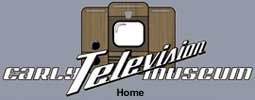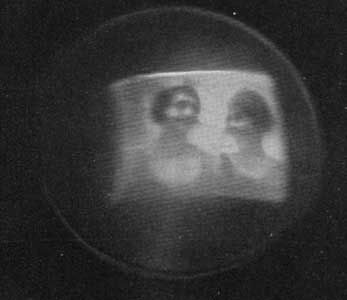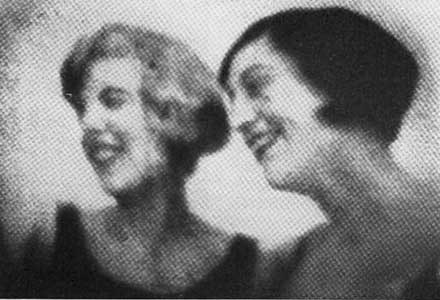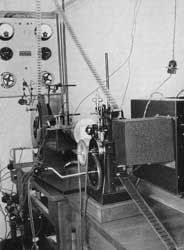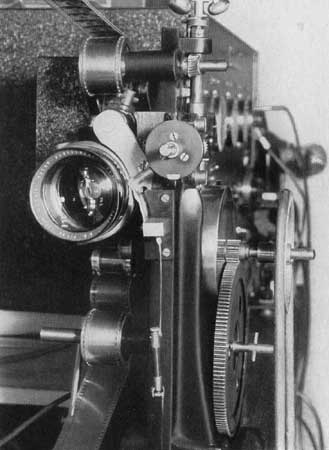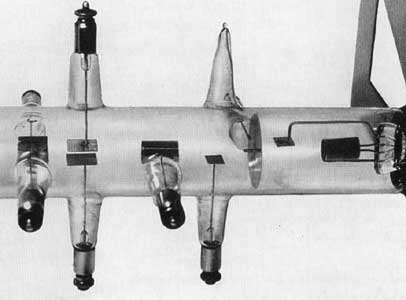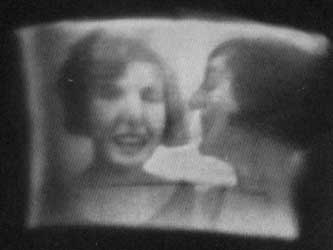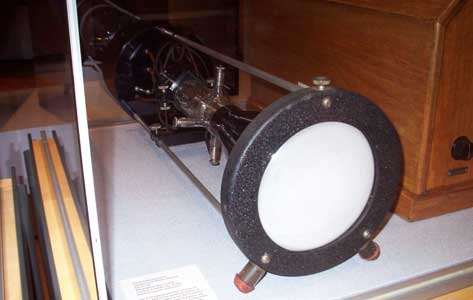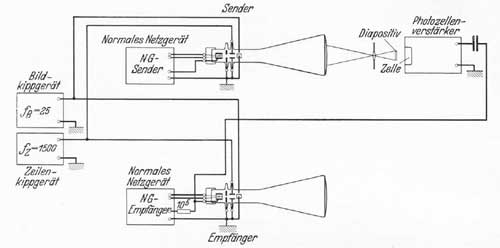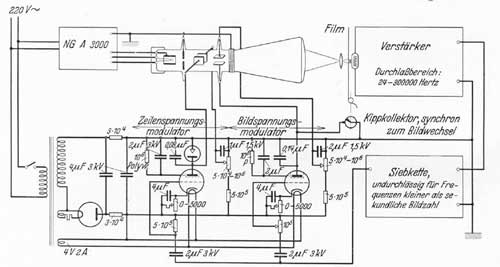Early Electronic Television Ardenne Flying Spot ScannerManfred von Ardenne, a German television engineer, began experimenting with CRT receivers in 1930. Using mechanical scanners, he produced good quality images using CRTs. We have one of the Ardenne CRTs described here on display at the museum.
In April of 1931 von Ardenne had made a flying spot film scanner. It produced a 60 line picture, using a horizontal scan rate of 1500 Hz. and a vertical scan rate of 25 Hz. An 8000 volt power supply was used on the CRT. Here is the receiver used in the system.
A block diagram. Notice that the scanner is connected directly to the monitor CRT. The signal was not broadcast.
Here is a block diagram of a scanner with sync pulses added to the video, for possible broadcast. From a Facebook post by Richard Hill:
|
